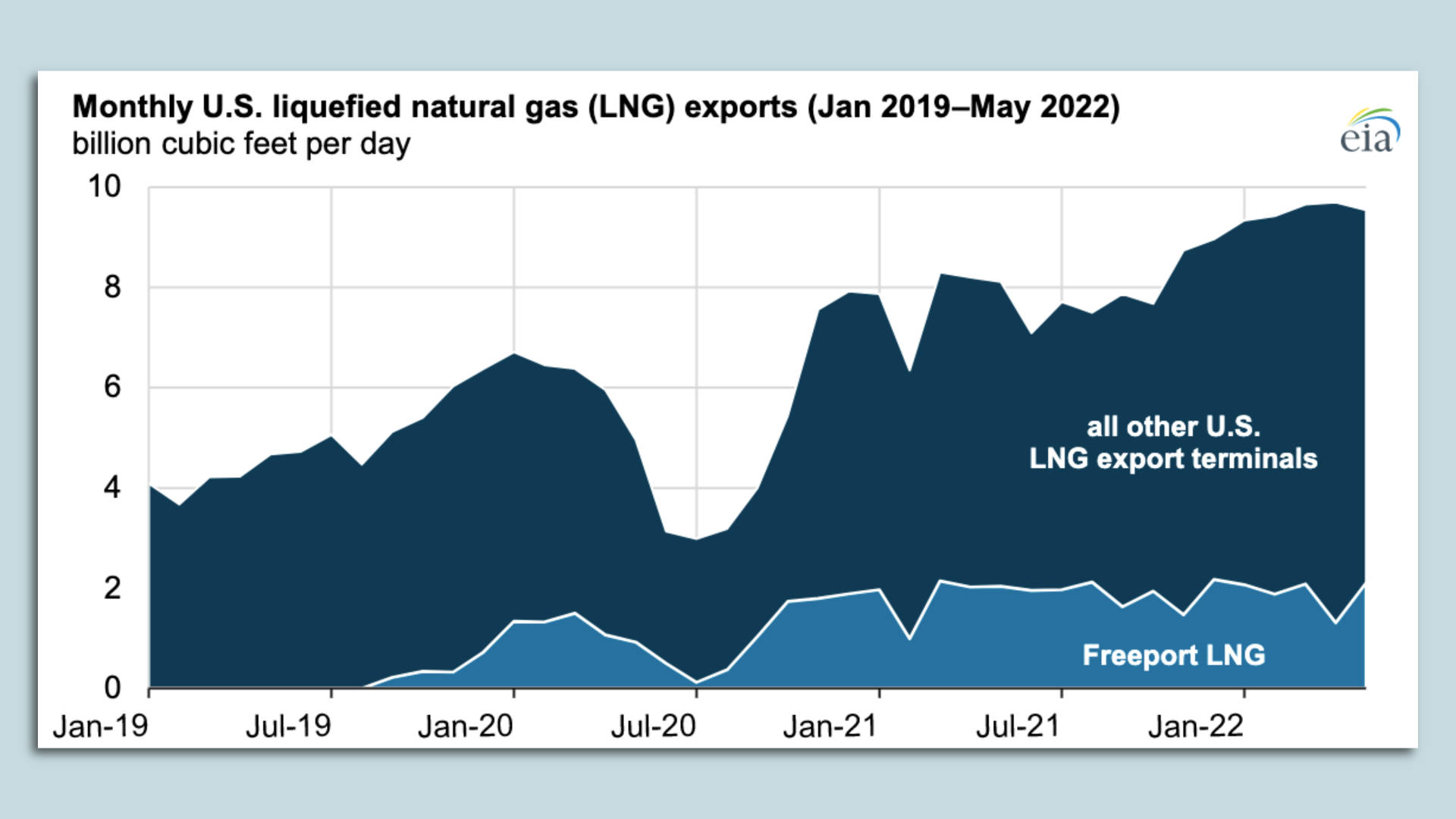| | | | | | | | | | | Axios Generate | | By Ben Geman and Andrew Freedman · Jun 24, 2022 | | 🍺 Oh yes! Get ready. Today's newsletter, edited by Mickey Meece, has a Smart Brevity count of 1,214 words, 5 minutes. 🚨 More than 1 million acres have burned already in Alaska, an early summer record. It raises concerns about added greenhouse gas emissions. 🎶 At this moment in 2000, the late Aaliyah was #1 on the Billboard Hot 100 with today's irresistible intro tune... | | | | | | 1 big thing: Real-time climate attribution arrives |  | | | Illustration: Annelise Capossela/Axios | | | | Climate scientists are now able to tell whether climate change fuels temperature extremes in real time and even ahead of time, using forecast models, historical data and peer-reviewed research, Andrew writes. Why it matters: A new product from Climate Central, a nonprofit research and journalism organization, marks a significant shift in thinking about the ties between daily weather and long-term climate change. - Presented in a compelling visual format accessible to the public and usable by TV meteorologists, the endeavor is known as the "Climate Shift Index," or CSI.
Driving the news: Climate scientists have made great strides during the past decade in finding the human fingerprints in worsening or setting off extreme weather events, such as heat waves and extreme rainfall. - These studies, known as extreme event attribution, have taken place after a disaster, and involve sifting through complex historical data and computer model simulations.
- Climate Central's real-time effort is currently limited to just one important parameter: temperature.
Between the lines: Based on methods recently published in a peer-reviewed journal, the organization is using weather and climate models combined with other sources to place daily high and low temperatures in a climate change context. - The CSI tool, designed in conjunction with outside attribution experts, including Friederike Otto of Imperial College London, gives a number to indicate how frequently certain temperatures now occur in a warming world.
Zoom in: If the CSI level is above zero, it means that human-caused climate change has made a day's temperature more common. A below-zero CSI reading would indicate climate change has made that day's temperature more rare compared to a climate without human-caused warming. - A CSI of 0 means a climate change influence is "not detectable."
- The scale, from minus-5 to positive 5, is available for the previous day out to three days ahead.
- A CSI value of 2 means the day's temperature was made at least twice as likely to occur compared to a world without human-caused global warming.
How it works: Behind the CSI lies years of slowly advancing work in determining how climate change is stacking the deck in favor of more hot and fewer cold extremes. - To compute it, Climate Central uses two methods that it averages together. One utilizes 22 climate models, which are run with and without added greenhouse gases from human activities, and the other uses observational data.
What they're saying: "This is a big step forward for operationalized event attribution," Noah Diffenbaugh, a climate scientist at Stanford University who was not involved in the Climate Central effort, told Axios via email. Read the whole story. |     | | | | | | 2. Oil drillers can't escape the supply chain crunch |  Data: Federal Reserve Bank of Dallas; Chart: Baidi Wang/Axios A new survey of oil executives helps explain why U.S. production growth isn't greatly accelerating despite attractive prices, Ben writes. Driving the news: The Dallas Fed's quarterly survey finds companies in the bank's region are grappling with shortages of key goods. - Check out the chart above, and in addition, 66% "expect it will take more than a year to resolve supply-chain issues."
- 33% say it would take 4-6 months to drill and complete an additional well beyond current plans, 24% said 7-9 months, and 24% estimated 10-12 months.
Yes, but: A swirl of forces is in play. Some 27% of execs said "uncertainty" over government regulation clouded the outlook, and 20% noted oil price volatility. And don't forget many companies have also said investor pressure to maintain "capital discipline" is a major brake on growth. Why it matters: The White House wants higher crude production (and more gasoline, more below) amid market tumult worsened by Russia's unprovoked attack on Ukraine. State of play: U.S. production is rising. The Energy Information Administration sees output at 11.7 million barrels per day this quarter, climbing to 13.3 million in Q4 of 2023. But the monthly forecasts are a moving target. |     | | | | | | 3. The "emergency" gas meeting: what we learned |  | | | Illustration: Gabriella Turrisi/Axios | | | | The huddle between top Biden officials and powerful oil execs produced no immediate breakthroughs but appeared to ease public tensions and sniping over high gasoline prices — at least for now, Ben writes. Driving the news: Energy Secretary Jennifer Granholm yesterday hosted what President Biden called an "emergency" meeting with officials from Chevron, Valero, BP, Exxon and others about fuel supply and prices. Here are a few themes that emerged from the session that also included State Department energy adviser Amos Hochstein. Nice words (mostly). It was a "constructive discussion," the American Petroleum Institute and American Fuel & Petrochemical Manufacturers said in a statement. - Chevron CEO Mike Wirth used similar phrasing, and so did BP and Shell.
- White House press secretary Karine Jean-Pierre called it a "productive" and "ongoing" dialogue on collaboration.
Lots of ground, but no firm decisions. Topics discussed included export restrictions (which the industry opposes), potential waivers of the Jones Act, and certain environmental rules on gas sales, per news reports and a source familiar with the meeting. - Administration officials "indicated they are unlikely to pursue limits on exports, especially oil, saying they understand it would do little to lower prices," the WSJ reports.
- "This is a first step...clearly we want to come to solutions," Jean-Pierre said.
Go deeper: AP coverage...DOE readout...industry readout...Biden ready to use "emergency" powers |     | | | | | | A message from Chevron | | It's only human to help power a brighter future | | |  | | | | At Chevron, we believe the future of transportation is lower carbon, and hydrogen fuel can help us get there. We're partnering with vehicle makers and commercial truck fleet operators to scale the hydrogen fuel industry, because we believe innovation can help power a brighter future. | | | | | | 4. Auto giants look to simplify EV charging |  | | | Illustration: Gabriella Turrisi/Axios | | | | General Motors and Nissan unveiled steps this week that the companies say make it easier for drivers to keep their electric vehicle batteries charged, Ben writes. Driving the news: GM yesterday unveiled its "plug and charge" system that works in conjunction with EVgo Corp.'s charging network. - Drivers with EVgo accounts and GM's OnStar service activate an app and then "simply plug in the charging cable and energy will start to flow to their vehicle — no additional steps needed," GM said.
- It plans to expand the capability to other charging stations with GM's Ultium Charge 360 network.
The big picture: Via TechCrunch, "GM is only the latest in a line of automakers that have launched or are in the process of launching Plug and Charge capability in their new EVs." Others include VW, Ford, Mercedes, Hyundai and more. Meanwhile, Nissan and the charging company Wallbox this week unveiled a new effort aimed at easier home charging. Starting next month, Nissan drivers can use the company's website to purchase Wallbox Pulsar Plus chargers and schedule installation. Nissan will provide a rebate on the charger and installation, it said. |     | | | | | | Bonus EV news: lithium investment | | 💵 Speaking of electric cars, auto giant Stellantis is investing nearly $53 million in the lithium producer Vulcan Energy Resources, the companies announced. Why it matters: Per the FT, it is the first European automaker to "make a substantial direct investment in the extraction of raw materials for batteries." |     | | | | | | 5. Fallout from the Freeport LNG shutdown |  | | | Image via the U.S. Energy Information Administration | | | | This EIA graphic published yesterday helps explain why the prolonged shutdown of the Freeport LNG plant after a fire is a big deal, Ben writes. Why it matters: The Texas facility accounts for 17% of U.S. LNG export capacity, per EIA's primer. - The shutdown is helping to push U.S. domestic gas futures prices downward by keeping supply onshore.
- But it's another challenge — one of several — for European efforts to move away from Russian supplies.
- It's spilling into domestic policy battles. Yesterday a suite of environmental groups used the fire as a hook for calling on the White House to curtail U.S. LNG exports more broadly.
Catch up fast: The company recently said it may not restart operations for almost three months or resume full operations until late this year. |     | | | | | | A message from Chevron | | It's only human to help power a brighter future | | |  | | | | At Chevron, we believe the future of transportation is lower carbon, and hydrogen fuel can help us get there. We're partnering with vehicle makers and commercial truck fleet operators to scale the hydrogen fuel industry, because we believe innovation can help power a brighter future. | | | | 📬 Did a friend send you this newsletter? Welcome, please sign up. Have a great weekend and thanks for reading! |  | It's called Smart Brevity®. Over 200 orgs use it — in a tool called Axios HQ — to drive productivity with clearer workplace communications. | | | | | | Axios thanks our partners for supporting our newsletters. If you're interested in advertising, learn more here.
Sponsorship has no influence on editorial content. Axios, 3100 Clarendon Blvd, Suite 1300, Arlington VA 22201 | | | You received this email because you signed up for newsletters from Axios.
Change your preferences or unsubscribe here. | | | Was this email forwarded to you?
Sign up now to get Axios in your inbox. | | | | Follow Axios on social media:    | | | | | |









No comments:
Post a Comment